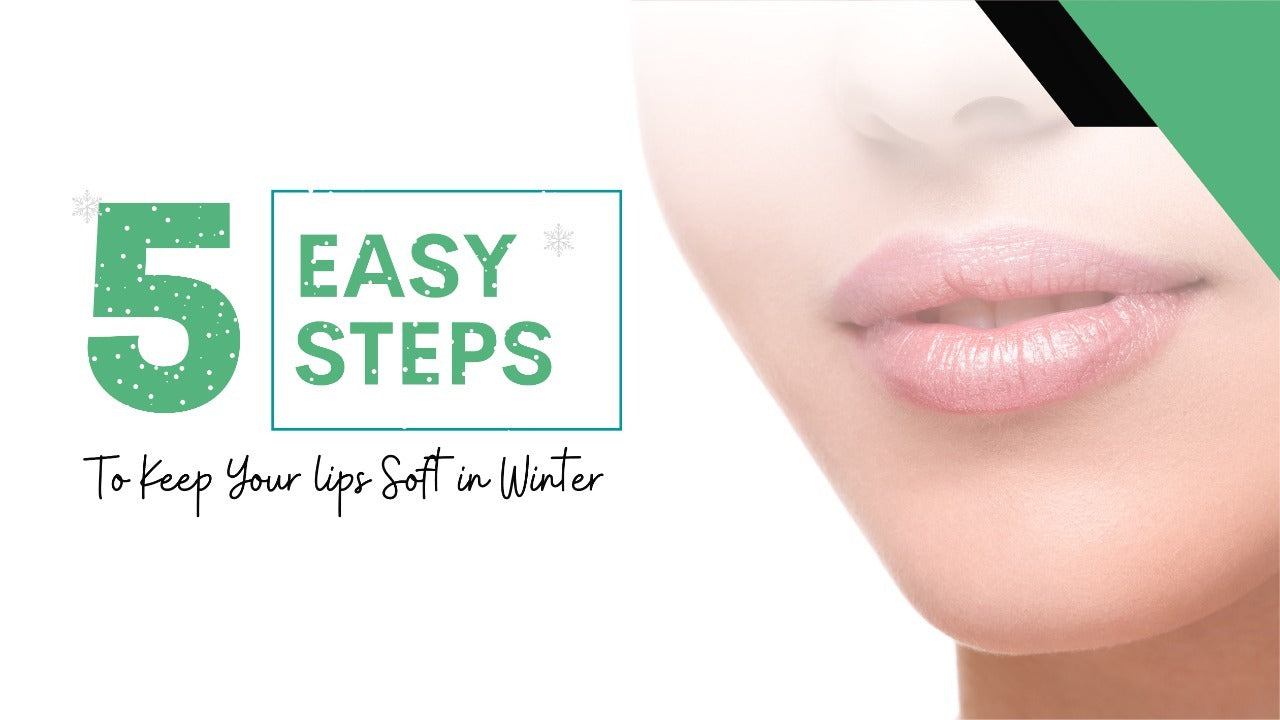5 Easy Steps for Lip Care with Lip Cream
Ladies, winter skin issues are real, and chapped, dry lips are one of those annoying issues. As the temperature drops, the dry winter wind dries out your lips, causing them to become chapped, flaky, slit, sore, and other unpleasant conditions. Most of us use lip balms that contain Petroleum jelly. This is not safe anymore, as this ingredient is carcinogenic and is getting phased out globally. But happily, using moisturizing lip creams and practicing good winter lip care helps protect your lips from the effects of the cold. Your lips may feel extremely tight and dry due to the harsh winter winds, but that doesn't mean you have to wait until spring to wear your favorite lipstick or achieve the perfect pout for a selfie.
Use a local application regularly:
Always keeping your lips hydrated is the first guideline of winter lip care, by frequently using a hydrating product on your lips. Your lips lose their natural moisture in the dry winter air, becoming dry and chapped. The secret to keeping them healthy and content even during the coldest months is to provide them with the right nutrition and a boost of fluids from time to time. Such products should contain beeswax, butters, vegetable oils, honey and vitamins like A and C. Your lips can be shielded from the dry air, smog, and grime with a covering of lipstick. Keep lip creams in your hand bag as well and use it whenever you feel your lips getting dry and parched.
Steer clear from licking your lips:
When your lips are feeling parched and dry, licking them seems to be the best course of action. However, it exacerbates the dryness, therefore you should stop doing it. Your lips may feel instantly moisturized for a short while, but the air causes the saliva to evaporate quite rapidly, leaving your lips feeling drier. This is due to the enzymes in your saliva drying up your lips and maybe irritating the delicate skin. Apply local moisturizer to your lips each time they feel parched. Additionally, avoid unnecessary lip contact to avoid spreading infection-causing bacteria and germs from your hands to your lips.
Don’t peel or pluck:
It's only normal to feel the impulse to peel or pick at the skin on your chapped lips, but doing so is strictly forbidden. To maintain the health of your lips and prevent any additional skin issues like scabs and blisters, resist peeling or picking at the flaky skin on your lips. Peeling lips can also result in blisters and cracks, which are not only ugly but also highly painful. In the same way that picking at your pimples causes more harm than good to your skin and can leave permanent scars, picking at your lips can cause blisters and cracks. Don't pick at the skin on your lips, and try to keep your hands to yourself. Instead, immediately treat them with a lip ointment or oil.
DO NOT apply petroleum jelly / petroleum jelly containing lip balms:
Skin problems associated with colder temperatures include cracked lips, dry skin, slits, and cold sores. It's critical to correctly care for your chapped and cracked lips so that they heal and the skin problems don't worsen. When your lips are peeling or cracked, avoid harshly rubbing or brushing them. It may result in an infection or, worse yet, lip sores. To hydrate and mend chapped lips, apply creams or ointments that contain vegetable oils. Petroleum jelly & other mineral oils are dangerous and are being globally getting removed from usual lip balms. Invest in a lip product that has natural components or an ointment to help with winter lip problems.
